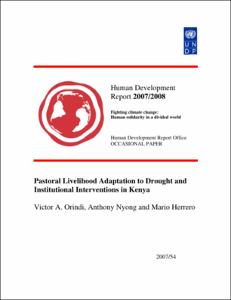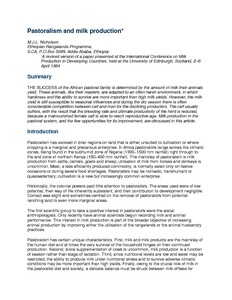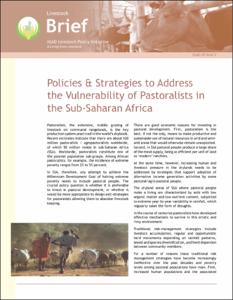Pastoralism 'alive and well' in Africa
Ian Scoones from the Institute of Development Studies and the Future Agricultures Consortium reflects on some key issues emerging from a recent conference on the future of pastoralism in Africa. His overwhelming conclusion: Pastoralism is "alive and well" in some parts of the continent. But there are downsides: constraints caused by pressures on land, as well as recurring conflicts. This leads to a division between those who are "really making it" and those who are "really struggling." This poses major policy issues at the two ends of these extremes.
Pastoralists’ perception of the impact of East Coast fever on cattle production under extensive management in Northern Rift Valley, Kenya
A study using participatory epidemiology (PE) methodologies was conducted in West Pokot and Baringo districts, Northern Rift Valley, Kenya to assess the status of East Coast Fever (ECF) and obtain livestock keepers’ perceptions of how the disease impacts on their livelihoods. A total of 658 livestock keepers comprising of 480 men and 178 women were invited to participate in community meetings held in twenty two purposively selected locations each in West Pokot and Baringo.
Pastoral livelihood adaptation to drought and institutional interventions in Kenya
Pastoralist futures in Africa a balance between traditions and opportunities
ILRI's Augustine Ayantunde reflects on the recent conference in Addis Ababa on the future of pastoralism in Africa. He draws attention to the two major conference strands - on one side, the optimists, on the other 'doom and gloom.' One thing is clear, it is not really possible to generalise across regions. He concludes by suggesting that the future will lie in pastoralist communities being able to take advantage of present opportunities while also taking care of their traditions.
Pastoralism and milk production
Presents a general description of pastoralist milk production from cattle in Africa, analyzing data on milk yield & offtake, lactation and milk composition under pastoralist conditions; briefly examines the use of milk from camels and smallstock by pastoralsits to complement their milk supply from cattle.
Patterns of diffusion of an institutional innovation in pastoral areas of Ethiopia. The community based animal health worker and its geographical and social spread in Afar region
Policies in support of pastoralism and biodiversity in the heterogeneous drylands of East Africa
Pratiques agropastorales et modes de patures des bovins dans la zone subhumide du Nigeria
Examines the consequences for cattle husbandry of livestock-crop integration as practiced in an agropastoral production system in the sub-humid zone of Nigeria - based on a study of herding practices and cattle grazing behaviour.
Productivite et potentialites des systemes pastoraux
Examines the productivity of East African pastoral systems in terms of animal protein & energy production, milk offtake and livestock production parameters such as calving percentage, calf mortality and herd structure; compares the productivity of East African pastoral systems to those of commercial ranches and to pastoral systems in other parts of the world.




